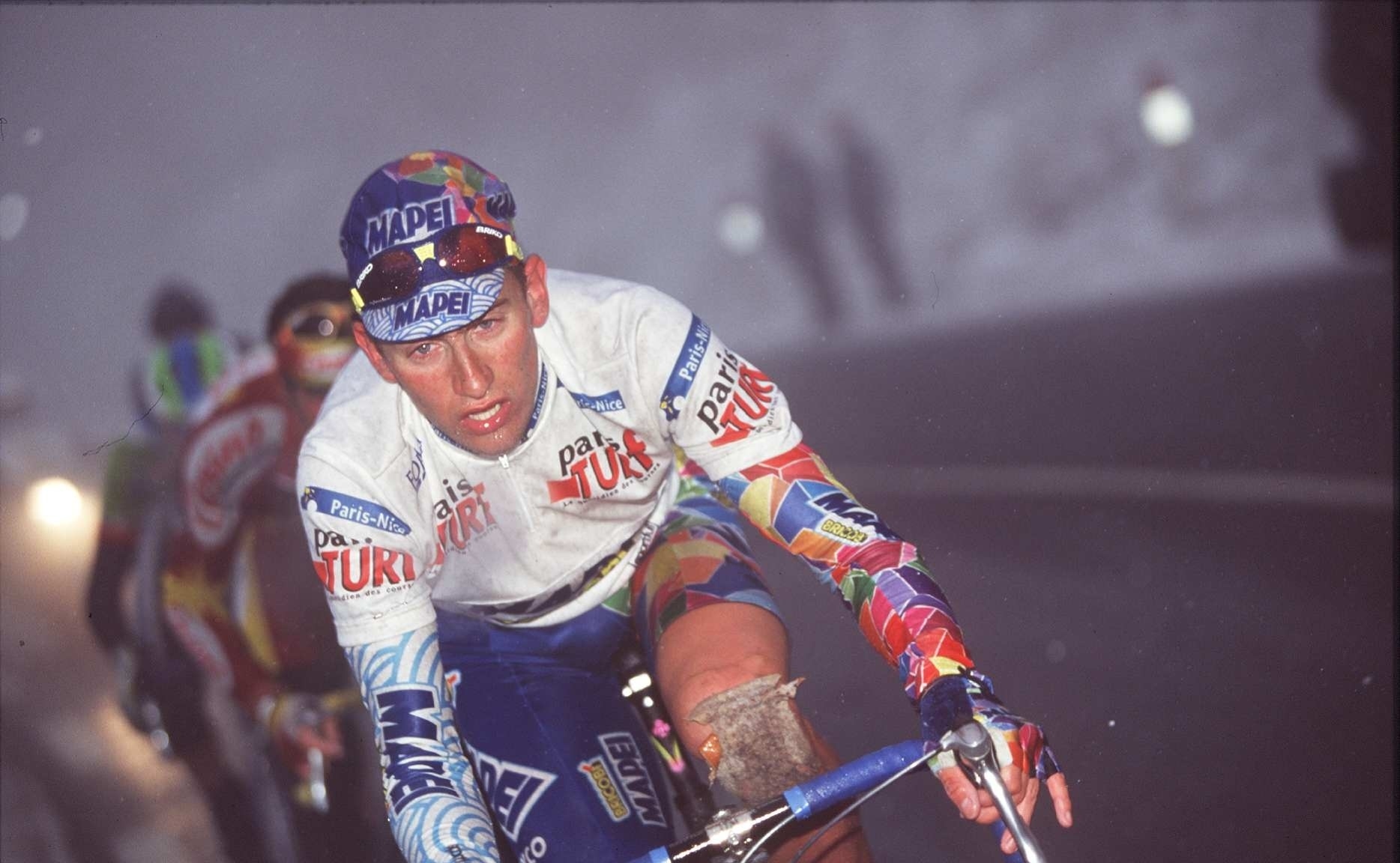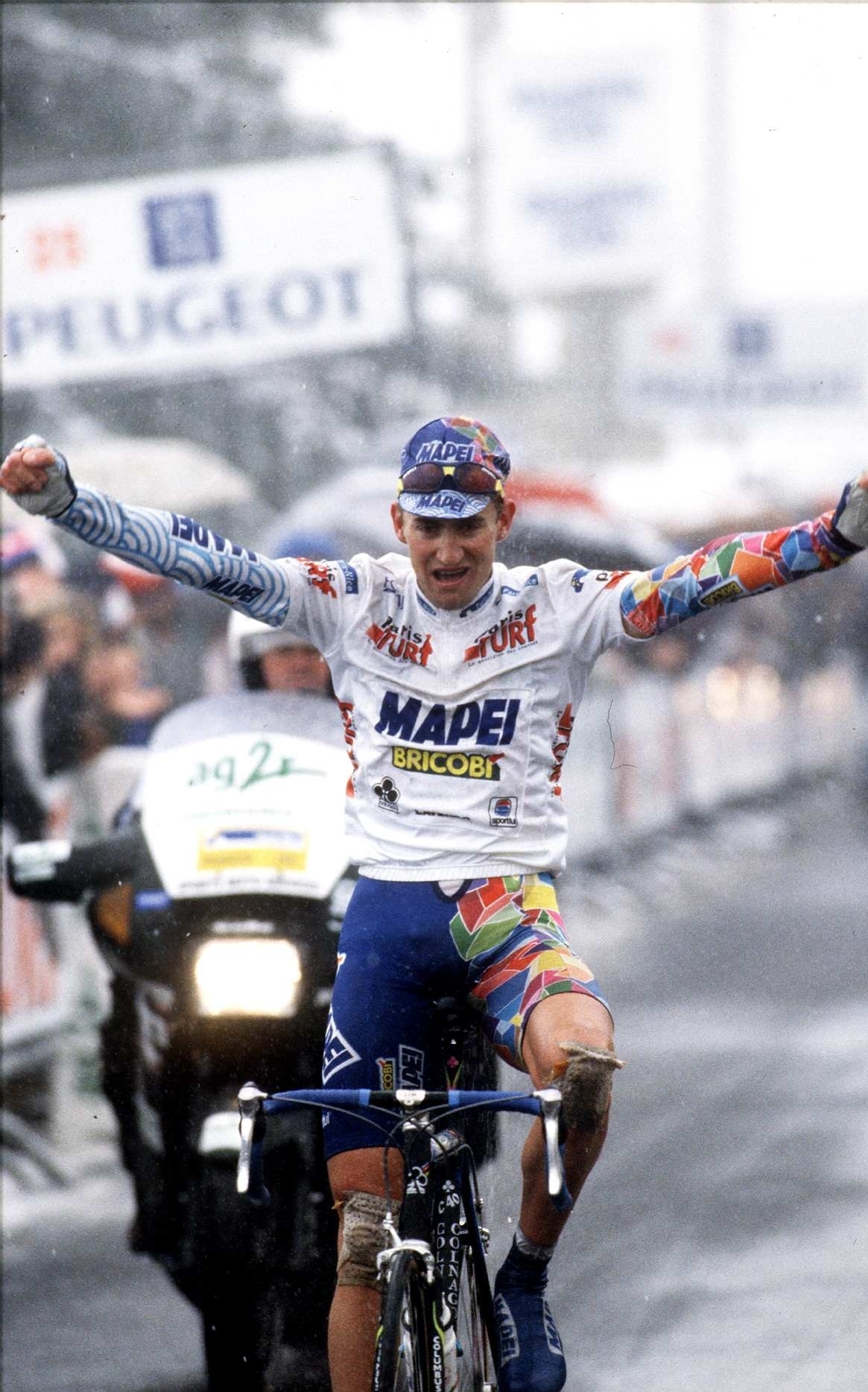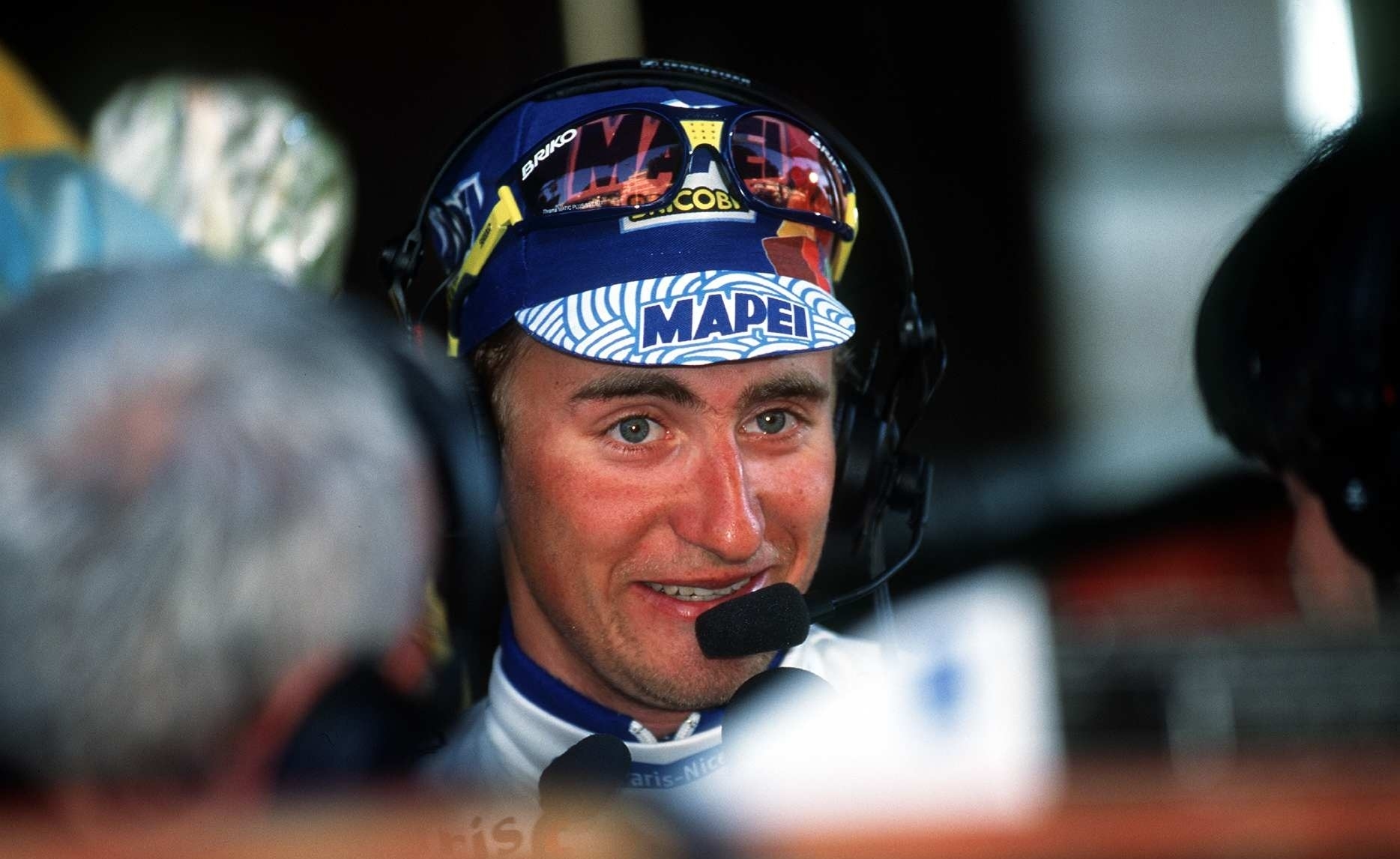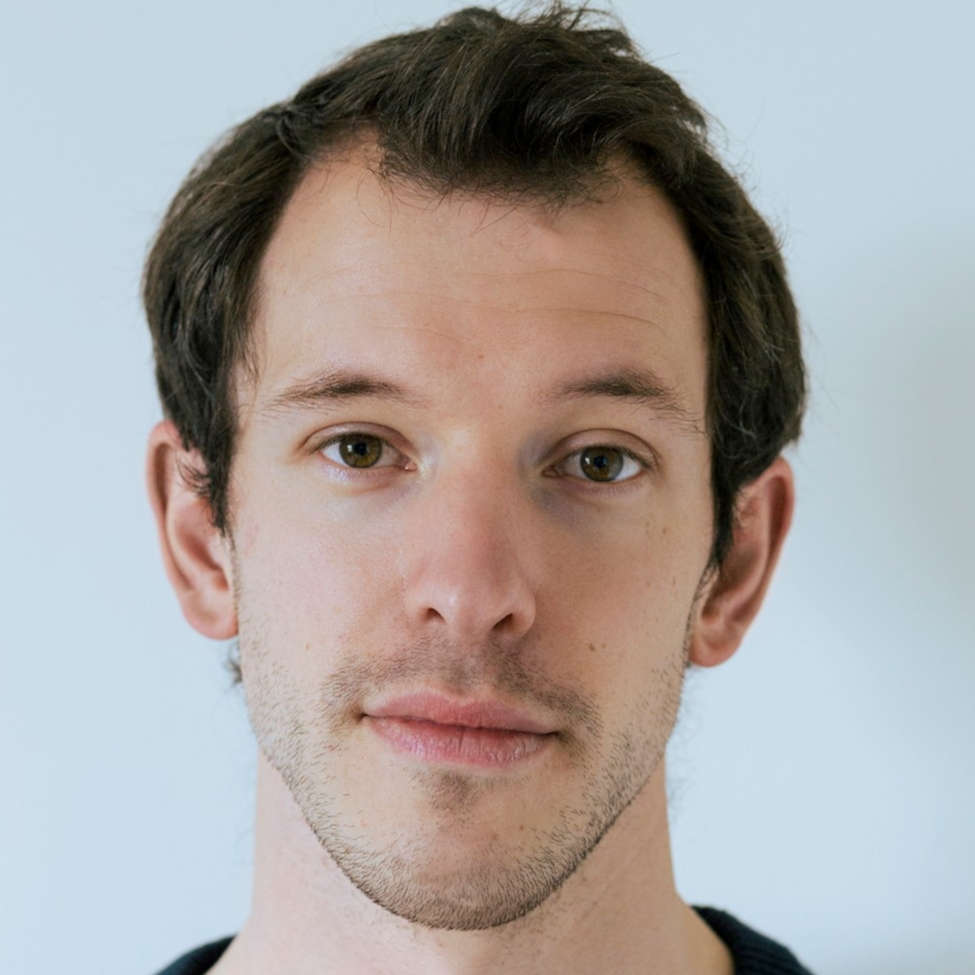Rider on the storm: Looking back on Frank Vandenbroucke's 1998 Paris-Nice victory
An extract from Andy McGrath's book 'God is Dead: The Rise and Fall of Frank Vandenbroucke, Cycling’s Great Wasted Talent'

The following is an extract from 'God is Dead: The Rise and Fall of Frank Vandenbroucke, Cycling’s Great Wasted Talent', by Andy McGrath. Available now on Amazon.
Over the winter of 1997, Frank Vandenbroucke spent weeks in Liedekerke with his friend Steve De Wolf and worked on strengthening his legs, emerging with the feeling that they had equal power. His results would bear out the good sensations.
Days before his first target of the year, the 1998 Paris–Nice, Vandenbroucke went to see Michiel Delva in Menen. "He did all his exercises like never before. He was so good, and I felt it," Delva says. The osteopath was surprised when Frank broke down in tears in front of him. "He thought he would not be good enough to win.
"It reminded me of a documentary about Mike Tyson. Just before he entered the ring, he was so in doubt. The fight started and it was over in thirty seconds: he almost killed the man. It was virtually the same." (In a team book a few years later, Vandenbroucke named the mercurial American boxer as his favourite athlete.)
A mid-March, week-long Tour de France in miniature, Paris–Nice is one of cycling’s hardest races to control, given its varying terrain and bracing weather. Its nickname, ‘The Race to the Sun’, is ironic given the race’s first half in France’s mid-section sometimes sees driving rain, treacherous crosswinds and even snow flurries before hitting the climbs of the Massif Central and the Alps. If the riders are lucky, they’ll get clement conditions on the Riviera.
Vandenbroucke dealt his first blow in the opener, a 10km time-trial which went over Mont-Valérien, the fortress hill that dominates the western side of the French capital, before finishing in the shadow of the Arc de Triomphe. He picked a forty-eight-tooth chainring while his team-mates went for forty-six; his choice of pushing bigger gears was not the best for his joints, but it paid off this time. Only two riders finished within twenty seconds of him.
Defending champion Laurent Jalabert was runner-up and would be his main rival in the general classification.
Get The Leadout Newsletter
The latest race content, interviews, features, reviews and expert buying guides, direct to your inbox!
Vandenbroucke’s team-mate Tom Steels won two stages before the conditions turned cold and rainy mid-race. Mapei had brought a team more tailored to their strong suit of flat races; in the hills, they paled in comparison to the Spanish team ONCE, led by Jalabert and packed with in-form climbers. Vandenbroucke had seen their strength first-hand, finishing fourth to an all-ONCE podium in the Vuelta a Andalucía weeks earlier. Stage 5, finishing on the Col de la République, would be decisive.
Snow blanketed the roads around Vichy and forced the race to be started at the 44km mark. Beforehand, Vandenbroucke had an injection of Lidocaine – an anti-inflammatory – and a large plaster covered his left knee, which was susceptible to feeling the chill.

His white race leader’s jersey blending into the wintry backdrop as little flakes fell on the final climb, Vandenbroucke let rivals Jalabert, Alex Zülle and Laurent Dufaux begin the process of attrition with attacks, before whittling down the group with his own moves. Attack would be his best form of defence: Jalabert was jettisoned yet the Belgian kept accelerating till the last man standing, the Frenchman’s team-mate Marcelino García, was unshipped.
Cutglass cheekbones reddening in the cold, his bare legs pushing on into the semi-whiteout, he made good his lead and took an audacious victory. It was one for the romantics; he even rode without a cycling computer, preferring not to be guided by any numbers. Vandenbroucke’s performance drew rave comparisons to the similar bad-weather exploits of Bernard Hinault at the 1980 Liège–Bastogne–Liège and Eddy Merckx on Tre Cime di Lavaredo at the 1968 Giro d’Italia.
"I’ve never felt such sensations in my career," Vandenbroucke said afterwards. "When you see you can drop Jalabert so easily and go out alone. I didn’t feel the pedals and I didn’t think about the bad weather: it’s so nice to be able to race like that. It was really way beyond my expectations."
The inadequacy of the Mapei team to support him showed especially in the following mountain stages. They burned themselves out with early chasing, leaving Vandenbroucke isolated on the climbs of stages 6 and 7, with Johan Museeuw the only team-mate who could stay in the peloton to help. ONCE went on the warpath, but Vandenbroucke responded to Jalabert’s numerous accelerations single-handedly.
Sometimes, mind games came in handy. "Against Jalabert or whoever, he could easily go on to a climb, just ride beside him, look at him and go back without saying a word," Tom Steels recalls.
After seeing off numerous attacks with apparent ease, there was a late twist. On the eve of the last stage around Nice, leading Jalabert by forty-three seconds, Vandenbroucke told the team that his knee was hurting and that he wanted to quit the race. He was persuaded to carry on and the team closed ranks: nobody was to breathe a word of this problem to a soul.
Given the rest of the team’s lack of climbing class, Mapei opted to bluff. Their riders set a fast pace and blocked the road behind a breakaway. "If somebody had attacked, the whole team was dropped. But they didn’t," Patrick Lefevere recalls.

"We had everything under control and Frank won the race," Wilfried Peeters says. "Gel in his hair, sunglasses, like a big champ. But a day before, he didn’t want to start. That was Frank."
Little wonder the winner told a TV crew afterwards that it had been the most intense week of his career.
As VDB stood on the final podium, he tossed his victor’s bouquet of flowers to Clotilde, wearing a black Dolce & Gabbana top, and a group of fans who had travelled from his home country chanted, ‘Il est phe-nom-en-al, la la la! La la la la la!’ He had reason to be especially happy, having promised himself a Porsche 996 Carrera sports car as a gift to himself for victory. But this high-octane new star denied being the boss of the sport when asked in an interview with Belgian television.
"I showed some nice things, but le patron? That’s a word I don’t like to use. Because in cycling, you can have a lot of highs and lows. This week, I was very strong."
"We can’t say you’re the boss and can’t call you a talent any more, so what are you now?" the journalist replies.
A smile and a bashful look to camera. "Frank Vandenbroucke, simply."
"A champion?"
"Not yet."
Outwardly, his Paris–Nice performance looked like a sporting amuse-bouche, a taste of what was to come. By leading from start to finish, combining such a powerful time-trial with imperious climbing, he gave a great impression of leadership.
However, Vandenbroucke was like a Russian doll: there were doubts big and small squirrelled away inside him. Seemingly so imposing and confident, sending the press into raptures about his sangfroid; so fragile deeper down.
'God is Dead: The Rise and Fall of Frank Vandenbroucke, Cycling’s Great Wasted Talent', by Andy McGrath, is available now on Amazon.
Formerly the editor of Rouleur magazine, Andy McGrath is a freelance journalist and the author of God Is Dead: The Rise and Fall of Frank Vandenbroucke, Cycling’s Great Wasted Talent
